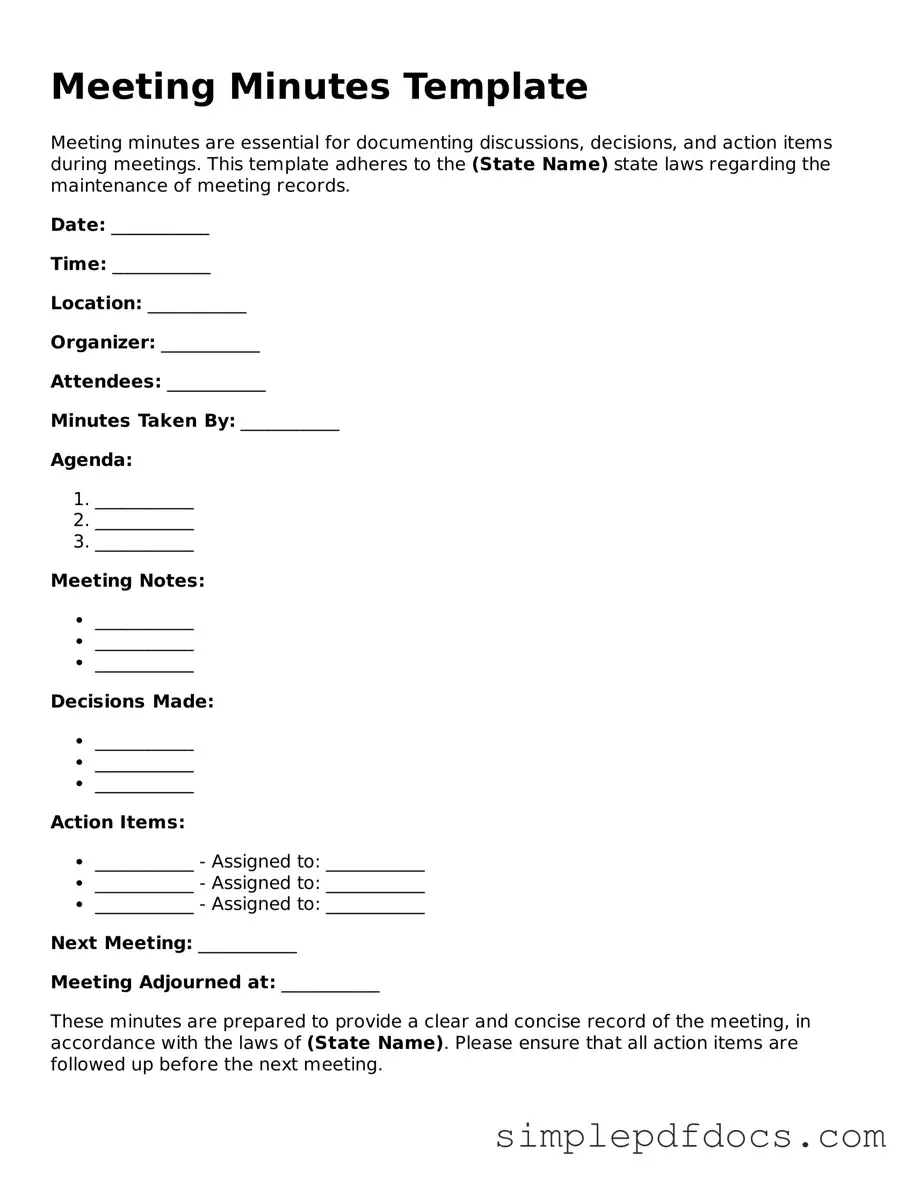Attorney-Approved Meeting Minutes Form
The Meeting Minutes form serves as an official record of the discussions and decisions made during a meeting. This document captures key points, participant contributions, and action items, ensuring that everyone remains informed and accountable. By maintaining clear and organized minutes, organizations can enhance communication and streamline follow-up activities.
Get Document Here
